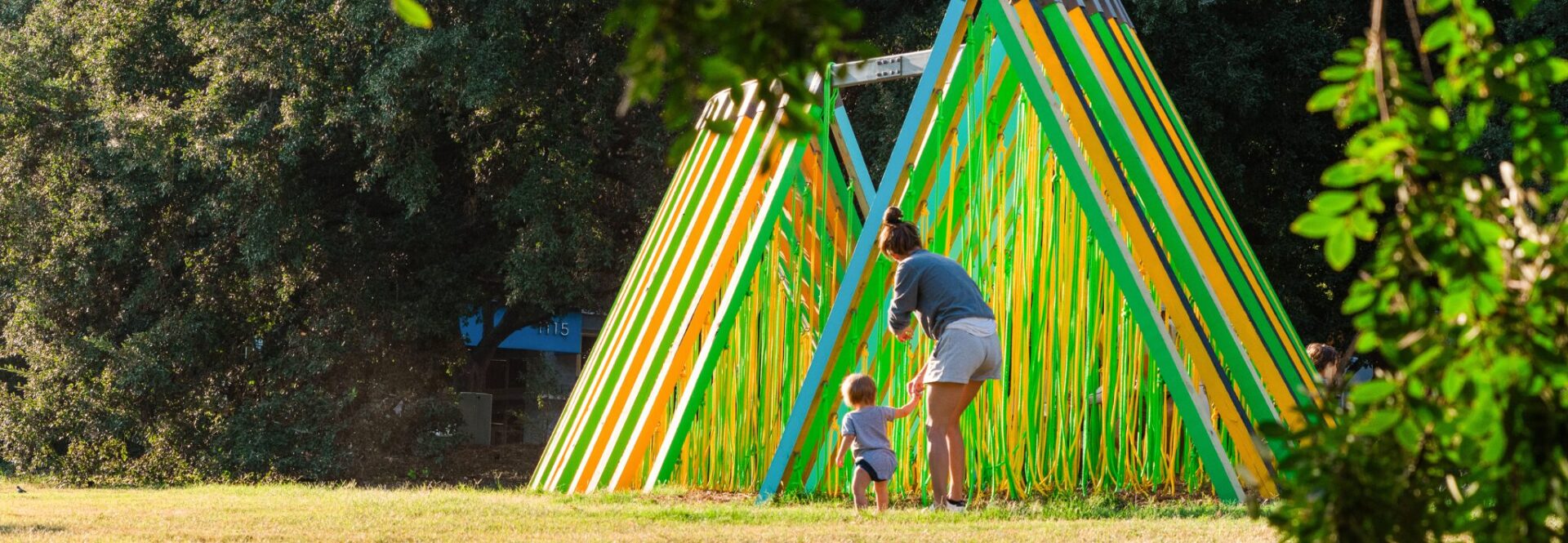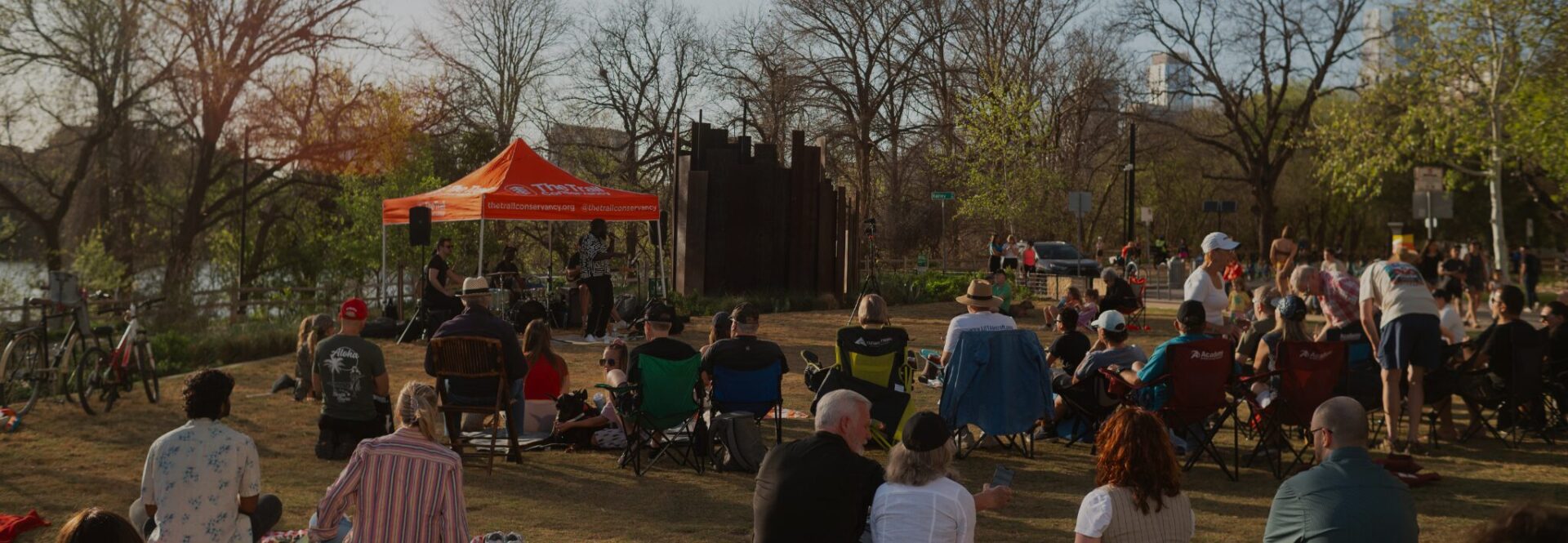TEMPO on the Trail 2024-25

TEMPO on the Trail 2024
TEMPO on the Trail, a temporary art exhibition in partnership with the City’s Art in Public Places program, is the first project to launch under The Trail Conservancy’s Arts + Culture Plan. TEMPO on the Trail combines art and nature, creating an outdoor gallery for all to enjoy. Installed in Spring 2024, the pieces will remain open along the Butler Trail through Spring/Summer 2025.
The Arts + Culture Plan for the Butler Trail is a transformative initiative to enrich our community by integrating art and cultural programming like TEMPO on the Trail into our beloved Trail. This program empowers local artists, amplifies diverse voices, and creates vibrant, inclusive spaces that reflect our city’s rich heritage.
TEMPO on the Trail 2024
TEMPO on the Trail, a temporary art exhibition in partnership with the City’s Art in Public Places program, is the first project to launch under The Trail Conservancy’s Arts + Culture Plan. TEMPO on the Trail combines art and nature, creating an outdoor gallery for all to enjoy. Installed in Spring 2024, the pieces will remain open along the Butler Trail through Spring/Summer 2025.
The Arts + Culture Plan for the Butler Trail is a transformative initiative to enrich our community by integrating art and cultural programming like TEMPO on the Trail into our beloved Trail. This program empowers local artists, amplifies diverse voices, and creates vibrant, inclusive spaces that reflect our city’s rich heritage.
- COSMOS COMPOSITION
- About
- Gallery
- About the Artist
Cosmos Composition
Adrian Landon Brooks
“Cosmos Composition” draws inspiration from Adrian’s studio work, transforming a simple trail into an otherworldly landscape. Vibrant cosmic imagery intertwines with the natural surroundings, creating a captivating contrast. The carefully chosen colors will breathe life and vibrancy under the bridge, offering an immersive experience for the community. As you walk by, the playful composition of the imagery guides your eye on a fluid journey through the cosmos.
meet the artist
Adrian Landon Brooks (born 1983) studied painting at the San Francisco Art Institute and currently lives and works in Wimberley, Texas. Brooks works predominantly in the mediums of painting and illustration, using found materials such as wood, metal, and old photographs as his canvases. He has exhibited throughout the United States and internationally, notably with Antonio Colombo Gallery and Andenken Gallery. In addition to his gallery work, Brooks has also completed large-scale installations and murals for companies such as Meta, Google, and Indeed. Brooks has also been featured in Juxtapoz, VNA, Art Maze Mag, and the West #126 issue of New American Paintings.
Symbiotic Disappearance
Chroma Collective
“Symbiotic Disappearance” focuses on the interconnection and reliance between monarchs and local milkweeds. Drawing from conversations with a local curandera, they learned that the green milkweed is at risk of endangerment due to rapid redevelopment in Austin and the surrounding areas. “Symbiotic Disappearance” is meant to make you contemplate your role in ensuring that we are creating an environment where these species are protected and can thrive.
meet the artists
Chroma Collective is a group of creatives dedicated to empowering young artists, uplifting the voices of our community, and creating artworks that are dedicated to peacekeeping practices. With more and more young people pursuing alternative career paths, Chroma Collective was designed to fill the gap in creative mentorship and professional development and expand pathways for leadership in the arts.
Each year, Chroma accepts 2-4 muralists who are alumni of its sister program, Color Squad. The cohort works closely with Creative Action’s Staff Muralist to complete up to 10 projects for a variety of clients, including city contracts, corporate clients, individual or private projects, and community organizations.
conversation stones
Diego Miró-Rivera
“Conversation Stones” is comprised of local alluvial limestones, naturally formed over thousands of years, and arranged here to make a place for dialogue. You are invited to stroll the grass paths, choose a stone that calls to you, and become grounded. By placing yourself on a Conversation Stone, you are signaling your openness to engage with anyone who inhabits a corresponding stone. This is an opportunity to get to know your community, be courteous, and create a meaningful experience.
Gracias y Gratitude to all who contributed to the making of the Conversation Stones: “Hecho en Cuernavac” Crew Abraham, Damian, Santos, Henry, Roberto, Moises, Luis, Gera, Juanito y el Greg. Friends and Family – Zane, Rosa, Julian, Hannah, Gavin, Ben, Niko, Silver, Brett, Juan, Miguel, and Jackson. And, most importantly, Abuela Becky, who makes the best food.
meet the artist
Diego Miró-Rivera was born in Austin, Texas, to parents from Puerto Rico and Spain. He graduated from Yale University in 2023, with honors in Art and Cognitive Science, and was awarded the Sudler Prize for the Creative Arts at commencement. Other formative experiences include a residency at the Norfolk School of Art, archaeological research on the Ancient Maya in Belize (Gurney Fellowship ‘22), and a study of Japan’s gardens (William Hotchkiss Fellowship ‘23). Diego’s work is focused on site-specificity, the natural world, and how humans relate through the manipulation of space. Some of his works are of immense scale, snow or grass tracks of several kilometers, others fit in the palm of a hand.
meet me in the park
Johnny Walker
“Meet Me in the Park” is centered around the idea of creating a meeting place. The design was initially created to offer an invitation for people to gather, to engage in conversation, to feel comfort in one another’s presence, to be heard and seen, to know that they are an important part of a bigger whole.
meet the artist
Johnny Walker. “Throughout my career as an artist I have worked with live animals, projected movies onto clouds, constructed playground equipment for adults, built machines that make weather, recreated UFO sightings, and placed pianos throughout a city to fill it with song.
In each of my works, location plays a key role. Time is also an element of the work. Each piece begins and ends. Through the work, I explore perception, memory, consciousness, presence, identity, community, and connection.
I like art that is found in places where it is thought to least likely exist.”
really small museum - eco
Juliet Whitsett
The “Really Small Museum” is a (really small) exhibition space that originated in 2021 to infuse art, celebration, conversation, and connection into two East Austin neighborhoods. Having featured works from over 60 artists, the impact of this community art project has extended far beyond the original front yards. “Really Small Museum- Eco” centers around collaborations focused on the environment, ecology, sustainability, and the natural world. Over the year, it will showcase twelve artists, including an exhibition of curator Juliet Whitsett’s art advocating for threatened and endangered species.
meet the artist
Juliet Whitsett (she/her) is an Austin, TX-based Artist and Arts & Environmental Educator with a Master’s Degree in Community-Based Arts Education from the University of Texas at Austin and a B.S. in Art Education from the University of Wisconsin-Madison. Her artistic practice focuses on the colors, lives, and forms of endangered and threatened species, community arts installations, and art-science partnerships.
wavelength: sky view
Darci Book
“Wavelength: Sky View” considers the illusion that humans are separate from nature. The sculpture’s simplified house shape suggests the thin barrier between indoors and outdoors, notably without walls. The artwork’s “rooftop” has been created by triangular windows that open to the sky between reflective gold panels. Reframing the sky offers the opportunity to appreciate the seasonal and hourly passing of time and to honor change.
meet the artist
Darcie Book (b. 1981, Baltimore, MD) is a multidisciplinary artist whose work explores paint as object and architecture through innovative processes using acrylic paint and metal leaf. She is interested in how the heightened physicality of the paint may generate corporeal resonance and elicit desire or longing.
norm
Raul Buitrago
“NORM” is composed of vintage LIFE magazine images that serve as a visual dialogue that interrogates the conventions of contemporary American existence. Buitrago aims to provoke contemplation about our present reality by juxtaposing these evocative snapshots from the past. Through this collage of contrasting images, Buitrago invites viewers to reflect on societal norms, challenge assumptions, and collectively explore the human experience. NORM also takes an inquisitive look into power dynamics.
meet the artist
Raul Buitrago is a photographer and director born and raised in New York City. His love for photography grew from his first passions: skateboarding and graffiti. Drawn to subcultures, he quickly picked up a camera as a way to connect with subjects and capture moments. He’s devoted to his subjects’ stories and building intimate connections. His work highlights the resilience and perseverance of communities. In between projects, you can find him hanging out with his partner, two kids, and German Shepherd, Marjie.
sun poem
Ani Bradberry
The Seaholm Water Intake Facility is a site in transition: profoundly empty and striking in its simplicity as architecture remains all that is left of a once-integral part of Austin’s public works. The space and its role in our future are being reimagined, yet it remains a resolutely historic artifact at the intersection of a rapidly developing downtown and the beloved waterfront Ann and Roy Butler Hike and Bike Trail. It is this multilayered in-between that “Sun Poem” takes place. It offers one year of a different kind of emptiness: two inverse hues of argon plasma illumination on the north and south walls fill the space with light, diffused and reflected on translucent fabric panels that grant color to the air and form to light. During the day, the sun joins the ever-shifting color gradient choreography as daylight turns to blue turns to red and back again. Emphasizing the vitrine-like nature of the building, “Sun Poem” encourages slow, thoughtful observation of change.
The light from the sun and the glowing glass tubes are illuminated by gas in a plasma state—the most common phase of matter in the universe—creating poetic alignment between urban neons and the cycles of the Earth and Sun. This commonality reminds us of the interconnected reality of the built and natural environment, made more poignant in the shadow of infrastructure that once powered the entire city of Austin. It should be noted that the work of the facility’s namesake, Walter E. Seaholm, against the privatization of Austin’s electricity, represents a significant and proud legacy of democratically-focused power production in our city. “Sun Poem” activates the Seaholm Water Intake Facility as a luminous temple of public power and a reminder of the original goals of the spatial designers (Burns & McDonnell) to celebrate the importance of beauty and humanness in our civic infrastructure.
A big thank you to the Austin History Center for their incredibly helpful staff and resources during the research phase and to Kenneth at Neon Sign Source and Clayton Cain for fabrication assistance!
meet the artist
tempo artists 2024
"Cosmos Composition" by Adrian Landon Brooks
“Cosmos Composition” draws inspiration from Adrian’s studio work, transforming a simple trail into an otherworldly landscape. Vibrant cosmic imagery intertwines with the natural surroundings, creating a captivating contrast. The carefully chosen colors will breathe life and vibrancy under the bridge, offering an immersive experience for the community. As you walk by, the playful composition of the imagery guides your eye on a fluid journey through the cosmos.
Website: www.adrianlandonbrooks.com | Social: @adrianlandonbrooks Location: Under 1st (Drake) Bridge – Northside
- Temporary art being build along Austin’s Hike-and-Bike Trail (KXAN, March 2024)
"Symbiotic Disappearance" by Chroma Collective
“Symbiotic Disappearance” focuses on the interconnection and reliance between monarchs and local milkweeds. Drawing from conversations with a local curandera, they learned that the green milkweed is at risk of endangerment due to rapid redevelopment in Austin and the surrounding areas. “Symbiotic Disappearance” is meant to make you contemplate your role in ensuring that we are creating an environment where these species are protected and can thrive.
Website: https://creativeaction.org/programs/for-the-community/chroma-collective/ | Social: @chromaatx @creativeaction Location: Under Bridge IH35 – Southside
"Conversation Stones" by Diego Miró-Rivera
“Conversation Stones is comprised of local alluvial limestones, naturally formed over thousands of years, and arranged here to make a place for dialogue. You are invited to stroll the grass paths, choose a stone that calls to you, and become grounded. By placing yourself on a Conversation Stone, you are signaling your openness to engage with anyone who inhabits a corresponding stone. This is an opportunity to get to know your community, be courteous, and create a meaningful experience.
Gracias y Gratitude to all who contributed to the making of the Conversation Stones: “Hecho en Cuernavac” Crew Abraham, Damian, Santos, Henry, Roberto, Moises, Luis, Gera, Juanito y el Greg. Friends and Family – Zane, Rosa, Julian, Hannah, Gavin, Ben, Niko, Silver, Brett, Juan, Miguel, and Jackson. And most importantly – Abuela Becky who makes the best food.
Website: https://diegomirorivera.com/ | Social: @gogomiro
Location: International Shores
Media Links:
- Connecting at the Conversation Stones Along Lady Bird Lake (Tribeza, June 2024)
- New art sparks conversation on downtown Austin’s hike-and-bike Trail (Culture Map, May 2024)
- New trail art encourages conversation (AXIOS Austin, April 2024)
"Meet Me in the Park" by Johnny Walker
“Meet Me in the Park” is centered around the idea of creating a meeting place. The design initially created to offer an invitation for people – to gather, to engage in conversation, to feel comfort in one another’s presence, to be heard and seen, to know that they are an important part of a bigger whole.
Website: www.JohnnyWalkerArt.org Location: Auditorium Shores
"Really Small Museum - Eco" by Juliet Whitsett
The “Really Small Museum” is a (really small) exhibition space that originated in 2021 to infuse art, celebration, conversation, and connection into two East Austin neighborhoods. Having featured works from over 60 artists, the impact of this community art project has extended far beyond the original front yards. “Really Small Museum- Eco” centers around collaborations focused on the environment, ecology, sustainability, and the natural world. Over the year, it will showcase twelve artists, including an exhibition of curator Juliet Whitsett’s art advocating for threatened and endangered species.
Website: www.julietwhitsett.com | Social: @juliet_whitsett_art | @reallysmallmuseum_atx Location: Holly Shores Lakefront Trail
"Sun Poem" by Ani Bradberry
“The Seaholm Water Intake Facility is a site in transition: profoundly empty and striking in its simplicity as architecture remains all that is left of a once-integral part of Austin’s public works. The space and its role in our future are being reimagined, yet it remains a resolutely historic artifact at the intersection of a rapidly developing downtown and the beloved waterfront Ann and Roy Butler Hike and Bike Trail. It is this multilayered in-between that “Sun Poem” takes place. It offers one year of a different kind of emptiness: two inverse hues of argon plasma illumination on the north and south walls fill the space with light, diffused and reflected on translucent fabric panels that grant color to the air and form to light. During the day, the sun joins the ever-shifting color gradient choreography as daylight turns to blue turns to red and back again. Emphasizing the vitrine-like nature of the building, “Sun Poem” encourages slow, thoughtful observation of change.
The light from the sun and the glowing glass tubes are illuminated by gas in a plasma state—the most common phase of matter in the universe—creating poetic alignment between urban neons and the cycles of the Earth and Sun. This commonality reminds us of the interconnected reality of the built and natural environment, made more poignant in the shadow of infrastructure that once powered the entire city of Austin. It should be noted that the work of the facility’s namesake, Walter E. Seaholm, against the privatization of Austin’s electricity, represents a significant and proud legacy of democratically-focused power production in our city. “Sun Poem” activates the Seaholm Water Intake Facility as a luminous temple of public power and a reminder of the original goals of the spatial designers (Burns & McDonnell) to celebrate the importance of beauty and humanness in our civic infrastructure.
A big thank you to the Austin History Center for their incredibly helpful staff and resources during the research phase and to Kenneth at Neon Sign Source and Clayton Cain for fabrication assistance!
Website : anibradberry.com | Social: @ani.data Location: Seaholm Intake Facility
"NORM" by Raul Buitrago
“NORM” is composed of vintage LIFE magazine images that serve as a visual dialogue that interrogates the conventions of contemporary American existence. Buitrago aims to provoke contemplation about our present reality by juxtaposing these evocative snapshots from the past. Through this collage of contrasting images, Buitrago invites viewers to reflect on societal norms, challenge assumptions, and collectively explore the human experience. NORM also takes an inquisitive look into power dynamics.
Website : www.raulbuitrago.com/ | Social: @raul_b
Location: Lamar St Bridge – Southside
"Wavelength: Sky View" by Darcie Book
“Wavelength: Sky View” considers the illusion that humans are separate from nature. The sculpture’s simplified house shape suggests the thin barrier between indoors and outdoors, notably without walls. The artwork’s “rooftop” has been created by triangular windows that open to the sky between reflective gold panels. Reframing the sky offers the opportunity to appreciate the seasonal and hourly passing of time and to honor change.
Website : www.darciebook.com | Social: @darcie.book
Location: Lakeshore
Location: 1920 E Riverside Drive, Suite A-120 PMB 223 Austin, TX 78741
Phone: 1-855-44-TRAIL
Newsletter
The Trail Conservancy is a non-profit, tax-exempt charitable organization under Section 501(c)(3) of the Internal Revenue Code. Tax ID: 87-0699956.


